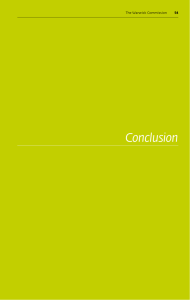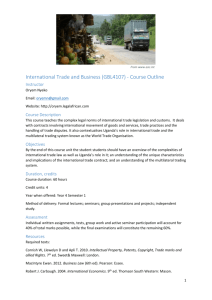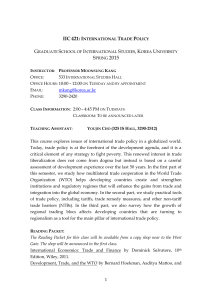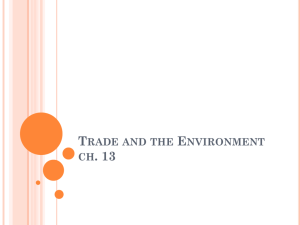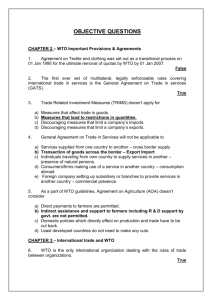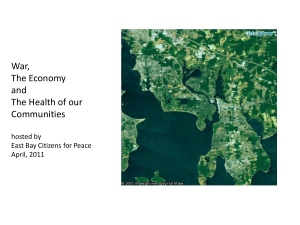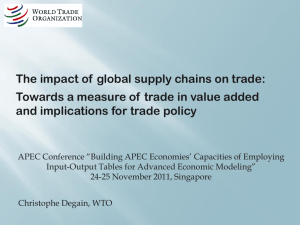Introduction to Trade Policy
advertisement
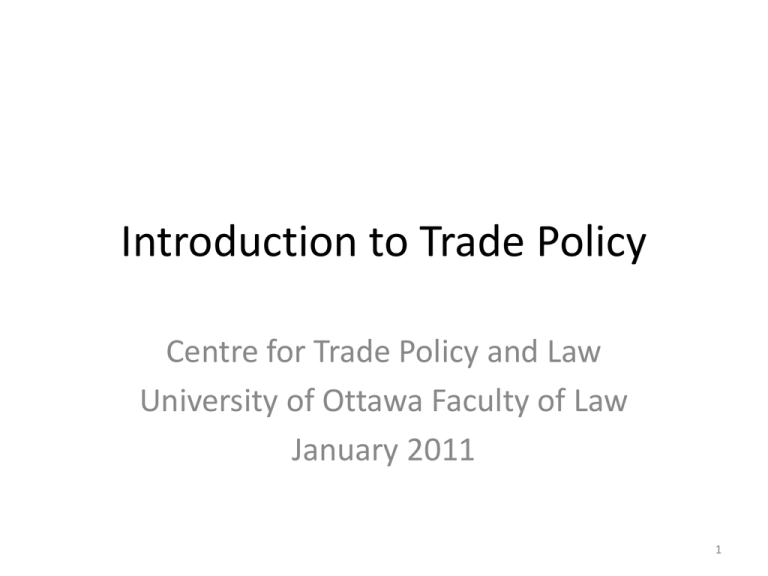
Introduction to Trade Policy Centre for Trade Policy and Law University of Ottawa Faculty of Law January 2011 1 International trade policy is understood as the system of rules that govern how states regulate international commercial transactions. 2 • International trade encompasses the exchange of goods and services. • In 2009, total international goods trade amounted to $12 trillion USD. – European Union $4.6 trillion – China $1.2 trillion; and – USA $1.1 trillion • In 2009, services trade amounted to $3.3 trillion USD – European Union $1.5 trillion – U.S.A. $470 billion – China $129 billion Source: The WTO Report www.wto.org 3 • International trade also encompasses foreign direct investment (FDI). – Note: There is no comprehensive multilateral agreement governing FDI. • As of the Uruguay Round of trade negotiations and the establishment of the WTO global trading rules also cover trade related aspects of intellectual property. 4 The Economics of Trade • • • • Adam Smith’s Wealth of Nations Ricardo’s theory explaining gains from comparative advantage. Krugman – productivity/specialization Porter – Clusters of excellence enhancing international competitiveness. • New New Trade Theory – Trade takes place at the firm level – Who succeeds and why • The impact of globalization on trade – Innovations in communications and transportation – Integration of research, development and production – Movement of skilled peoples • Limitations imposed by geography and politics 5 Trade Policy Interfaces • • • • • • Foreign policy International security Trade and development Trade and labour Human rights Environment 6 The Relationship to Domestic Economic Policy • Success in international trade is dependent on domestic economic fundamentals. – Fiscal, monetary and tax policies must be right • Domestic policy fundamentals promote productivity and competitiveness. 7 Contribution of Exports and Imports • Exports generate economic activity and jobs. • Exports increase foreign exchange earnings. • Imports lower costs for Canadian producers using foreign made inputs. • Imports lower costs to consumers. 8 The Conduct of International Trade • The role of Government – International agreements among trading nations • Multilateral/plurilateral/bilateral • The role of the private sector – Commercial transactions: trade in goods; trade in services; investment. – Stakeholders: business; consumers; NGOs and other interested parties. 9 Evolution of the Global Trading System • The Bretton Woods Framework. • The General Agreement on Tariffs and Trade (GATT) contract. • A multilateral trade institution: the WTO – The WTO Agreements – The WTO’s relationship to other international organizations 10



